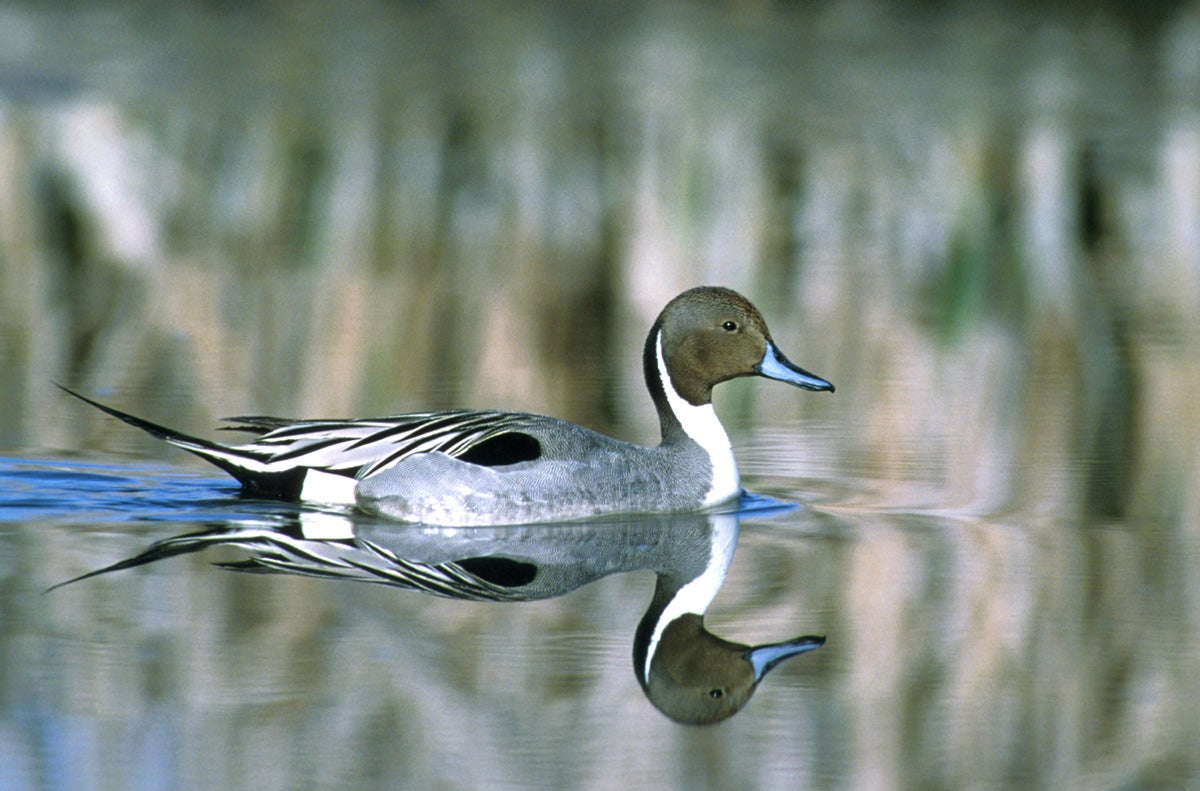SCIENTIFIC NAME:
Anas acuta
STATUS:
Common in winter, spring, and fall in Tennessee Valley, Inland Coastal Plain, and Gulf Coast regions; uncommon in Mountain region. Occasional in summer in Tennessee Valley and Gulf Coast regions. Low Conservation Concern.
DESCRIPTION:
A graceful, sleek and slender species of North American waterfowl with males having two long central tail feathers that earn it the name. At 21 to 29 inches in length, the pintail has a greater total average length than the mallard yet customarily weighs 20 percent less. The male has blue-gray bill and feet, while its head and throat are chocolate brown. The male’s belly, breast, and neck are white and tail feathers are black. The wings of males are mostly grayish-brown and the wing speculum is green. The presence of the long central tail feathers or “sprig” makes the male easy to identify. The female is similar in coloration to the female mallard, yet more slender in overall appearance. The female’s bill is blue-gray and speculum will be a light shade of greenish brown. The drake has a soft, low whistle that can be heard primarily during the breeding season. The female emits a soft guttural quack.
DISTRIBUTION:
Widespread and abundant across United States, with numbers greater in western states. The pintail ventures far to the North during the nesting season. The breeding range extends from the northern continental U.S. to the Arctic Ocean. They winter primarily in the southern half of the United States.
HABITAT:
Common in marshes and open areas with ponds. A dabbling duck, they prefer shallow waters where they can tip to feed rather than diving or completely submerging.
FEEDING HABITS:
Diet is made up primarily of vegetable material (seeds, stems, etc.). Pintails will consume wild millet, rice, pondweed, smartweed, bulrush, as well as small invertebrates and crustaceans.
LIFE HISTORY AND ECOLOGY:
The female will construct a slightly elevated nest in the marsh grasses, sometimes up to a half-mile from water, and will lay 3 to12 olive green eggs. Incubation is completed by the female, usually in 22 to 25 days. Unlike many other waterfowl species, the male will stay in the vicinity of the nest and may offer help in raising the young. The ducklings will fledge in 36 to 57 days.
REFERENCES:
Alsop, F. 2001.Birds of North America. DK Publishing Inc., New York, NY.
Carney, Samuel M.1992. Species, Age and Sex Identification of Ducks Using Wing Plumage. U.S. Department of the Interior, U.S. Fish and Wildlife Service. 144pp.
AUTHOR:
Ben Davis






